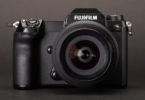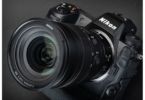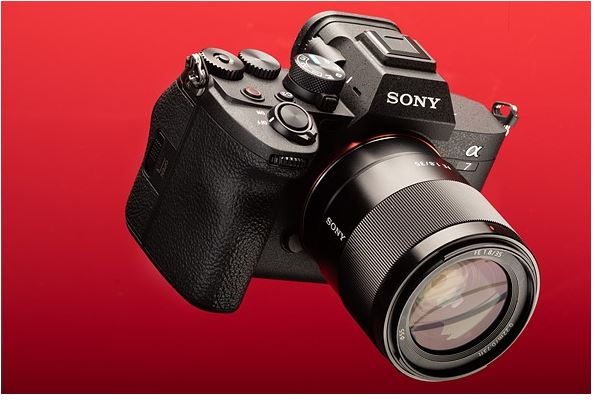
The Sony a7 IV is the fourth generation of the company’s core a7 full-frame mirrorless camera model. It’s the most advanced yet, bringing many of the improvements Sony has made in terms of autofocus and interface design since the launch of the a7 III in February 2018.
Key Specifications
- 33MP BSI CMOS full-frame sensor
- Up to 10 fps shooting in lossy Raw with extensive buffer
- In-body stabilization rated up to 5.5EV
- Full-width oversampled 4K from 7K, up to 30p
- 4K/60p oversampled from 4.6K with Super35 / APS-C mode
- 10-bit video or HEIF stills capture
- H.265 video, S-Cinetone color mode
- 3.69M dot OLED viewfinder
- Twin card slots (1x CFe A/UHS-II, 1x UHS-II SD)
- Full-time Bluetooth LE connection
The a7 IV sees almost all of its specs improved over the a7 III, from basics like sensor and viewfinder resolution to significantly higher video capture options.
The a7 IV will be available from the end of December 2021 at an MSRP of $ 2,499, an increase of $ 500 over the launch price of the a7 III.
What’s new
33MP BSI-CMOS Sensor
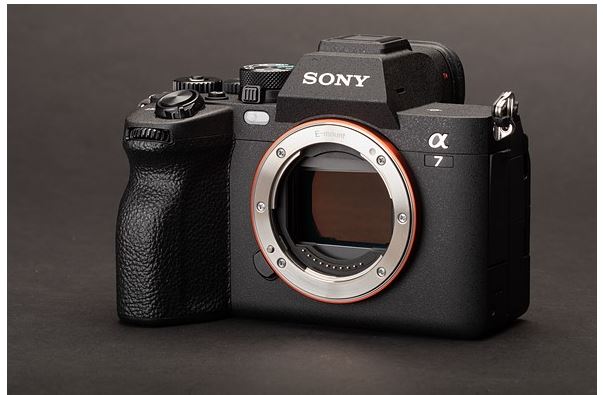
At the heart of the a7 IV is a new 33MP BSI-CMOS sensor. This represents a departure from the 24MP chip used by the a7 III and its immediate rivals Panasonic and Nikon. Since BSI sensors are already widely used in the current generation of cameras, we are not expecting major advances in image quality. A slight increase in detail and comparable low-light performance is the most likely thing we can expect, in terms of image quality.
Despite the higher resolution, the a7 IV can still shoot at 10 frames per second. However, you can only do it in the lossy compressed format if you want to shoot Raw. The a7 IV has a lossless compression option, for when you need maximum processing flexibility, but the burst rate drops to around 6fps if you use it. Sony says the camera’s buffer depth allows for over 800 Raw + JPEG images (or over 1000 JPEGs), but this is in the uncompressed Raw format, again shooting around 6fps.
Our first look at rolling shutter speeds suggests that this isn’t an especially fast sensor. The 14-bit read from the entire sensor for still images takes about 1/15 of a second (~ 66 ms), which is about seventeen times as long as it takes for the ultra-fast a1 to read its sensor. This means that the silent shutter mode is likely to cause significant distortion with moving subjects.
Silent shutter mode is likely to result in significant distortion with moving subjects
Full-width 4K video takes around 26.5ms, which is comparable to the other models in its class. The camera is likely dropping to a 12-bit readout for video mode, like most ILCs, but the pixel blending process by reducing the resolution of the footage from 7K to 4K should reduce noise and therefore, Therefore, avoid DR dropping to ~ 12EV. 60p footage has a shutter speed of around 12.8ms, which is slow enough to avoid distortion of all but the fastest movement.
Autofocus
In terms of autofocus, the improvements over the a7 III should be quite significant, not so much because of the promise of focusing in conditions that are a step darker (–4EV with an F2 lens) but because that camera was one of the latest Sony that did not integrate Eye AF into its main AF system and relied on a much more primitive AF tracking system. The a7 III could detect human eyes, but only in a dedicated Eye AF mode that could detect nothing but eyes and faces. If your subject looked away, AF would jump to another face in the scene or stop if there were none. If you want to track more generic subjects that can stare or flee, you could use the more primitive ‘Lock-on’ tracking, but it wouldn’t benefit from Eye AF’s specificity.
The a7 IV replaces ‘Lock-on’ with its latest ‘tracking’ (in real-time), which uses pattern detection, color, brightness, eye, and face detection to better understand the subject you started focusing on. This allows the camera to seamlessly switch between the subject’s eyes, face, head, and body as needed to keep following him even if he looks or turns away, rather than being distracted by another face. In practice, the system is very reliable.
The a7 IV also has modes that can more accurately detect and track animals, including birds, dogs, and cats. For the first time, these animal detection capabilities are also extended to the camera’s video mode.
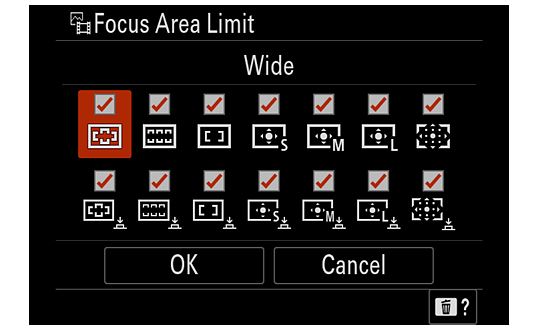
The a7 IV still offers a dizzying array of AF area modes (including ‘tracking’ variants of each), but you can at least disable all the ones you don’t use. The tracking versions are unavailable in video mode: instead, you tap the rear screen to select a subject for the AF to follow.
The simplicity of the system makes it difficult to convey how effective it is. But like Canon’s latest AF system, you just need to tell the camera what you want to focus on and it will use the most appropriate of its powerful AF algorithms to maximize your hit rate. Until you’ve used a system like this or a comparable one on recent Canon cameras, it’s hard to appreciate just how powerful, reliable, and simple they can be.
Video

Movie mode gets its own switch, rather than being part of the exposure mode dial. A menu option in the setup menu lets you choose which settings are carried over and which are maintained separately for stills and video.
After autofocus, the biggest area for improvement is in terms of video capacity. The a7 III was the first a7 model to offer 4K capture. Its implementation was pretty good for early 2018, with 24p capture oversampled from the full width of its sensor, but a crop required for 30p shots. All footage was captured with 8-bit precision, at relatively modest bit rates.
The a7 IV makes significant strides, adding 10-bit capture to increase log footage processing flexibility and to enable full Hybrid Log-Gamma (HLG) capture for playback on HDR televisions.
It also gains the ability to shoot 4K / 60p for action capture or slow-motion work, but this requires cropping to APS-C / Super 35 dimensions. Images from a 4.6K region are oversampled. There are also options to use H.265 (XAVC HS) compression and apply the S-Cinetone color profile.
Eye AF and its new ‘tracking’ mode are now available in video mode, which should substantially increase the degree to which you can depend on autofocus staying on your chosen subject. Simply touch your subject on the LCD screen to start tracking on it and, as in stills mode, the camera will automatically switch between general subject tracking and Eye AF as needed. Tracking reliability has been greatly improved compared to the unreliable (and cumbersome to activate) mode of ‘Center Lock-on on the a7 III, as ‘tracking’ now uses additional information to understand the subject and also limits more strictly sudden distance changes in the focused strip. As in still image capture mode, the camera has been trained to recognize humans, animals, and birds.
A menu option lets you decide which settings are transferred from still images to video and which ones keep independent values. You can choose from the aperture, shutter speed, ISO, exposure compensation, metering mode, white balance, picture profile, and focus mode. It’s worth setting this up when you start shooting with the camera, so you can simply turn on the Still Images / Video switch when you want to jump between shooting styles.
Breathing compensation
The a7 IV adds a breath compensation mode that crops and resizes video to cancel out any change in the angle of view (AoV) of a lens while focusing. The mode only works with select Sony lenses (all GM lenses and some G-series glasses), as the camera requires a profile of respiratory characteristics. Video is cropped to match and maintain the narrowest AoV that could occur if you focus from the minimum focusing distance to infinity, which means there are no distracting framing changes when refocusing.
Live streaming
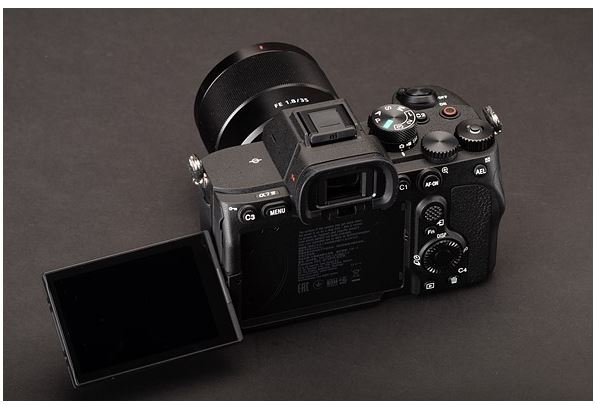
A fully articulating screen can be useful for waist-level shooting, vlogging or selfies. It also allows you to monitor the camera if you’re using its streaming mode.
The a7 IV also offers the ability to stream live video through its USB connection using the audio and video (UVC / UAC) standards that are part of the USB standard. This allows you to choose between HD or FullHD resolutions with FullHD available at up to 60fps. There’s also a 4K option, but this only supports 15 frames per second, giving the footage a gruesome stop-motion look. The connection is designed to be as simple as possible, using Imaging Edge Webcam software for Mac or PC. A connection via smartphone is also possible, although audio may not be available at resolutions higher than HD (720).
HEIF 10-bit stills
The a7 IV has the ability to capture 10-bit compressed images, rather than just the 8-bit JPEGs that were historically offered. Unlike Canon, which only uses HEIF capture for HDR PQ images, Sony allows you to shoot standard 10-bit DR images, with a choice of 4: 2: 2 or 4: 2: 0 chroma subsampling, if you can find the benefit of doing it.
The downside to this added flexibility is that if you want to take advantage of the additional dynamic range, a Hybrid Log-Gamma (HLG) color/gamut mode can capture at the largest Rec. Color space 2020, you must first turn on HEIF capture before you can turn on HLG Stills, rather than changing both settings to match each other. It’s worth a try though – pictures taken in HLG can display much more of the camera’s dynamic range to give a much more realistic version of your picture when viewed with an HDR-capable TV.
How it compares
The a7 IV becomes the most expensive iteration of the a7 model yet, priced at one of the most expensive of its competitors. We’ve lined it up alongside the similarly priced EOS R6 and the significantly cheaper Nikon Z6 II. Panasonic’s Lumix DC-S5, which we didn’t have space to include, offers a fairly similar video specification (10-bit 4K capture, including 60p of its APS-C crop) but its autofocus isn’t as effective. Like the Nikon, he thought, it is notably less expensive.
We’ve included the a7 III to show what the a7 IV gains over its predecessor, but there’s also the smaller, less expensive a7C that shares most of its specs with the a7 III. The only major difference is that the a7 C has a slower flash sync speed and a smaller but higher resolution viewfinder. The a7C has a newer AF system than the a7 III, so its performance and usability will be a little closer to the new camera.
| Sony a7 IV | Canon EOS R6 | Nikon Z6 II | Sony a7 III | |
|---|---|---|---|---|
| MSRP at launch | $2499 | $2499 | $1999 | $1999 |
| Pixel count | 33MP | 20MP | 24MP | 24MP |
| Sensor tech | BSI-CMOS | CMOS | BSI-CMOS | BSI-CMOS |
| AF system | On-sensor PDAF | Dual Pixel (On-sensor PDAF) | On-sensor PDAF | On-sensor PDAF |
| Image stabilization | 5-axis | 5-axis + sync with lens IS | 5-axis | 5-axis |
| CIPA rating | Up to 5.5EV | Up to 8EV | Up to 5EV | Up to 5EV |
| Maximum frame rate | 10 fps (lossy Raw) | 12 fps mech shutter 20 fps electronic | 12 fps (14 fps*) | 10 fps |
| Flash Sync speed | 1/250 sec | 1/250 sec** | 1/200 sec | 1/200 sec |
| Viewfinder res / mag | 3.69M dots /0.78x | 3.68M dots / 0.76x | 3.68M dots / 0.80x | 2.36M dots / 0.78x |
| Rear screen | 1.04M fully-articulated touchscreen | 1.62M-dot fully articulated touchscreen | 2.1M-dot tilting touchscreen | 0.92M-dot fully articulated touchscreen |
| Top-plate settings display | No | No | Yes | No |
| Video capture | UHD 4K 30p (full sensor) UHD 4K 60p (1.5x Crop) | UHD 4K 60p (1.05x crop) | UHD 4K 30p (full sensor) UHD 4K 60p (1.5x Crop) | UHD 4K 24p (full sensor) UHD 4K 30p (1.2x Crop) |
| Log/HDR modes | S-Log2 / 3 / HLG 10-bit internal | C-Log HDR PQ 10-bit Internal | N-Log HLG 10-bit (HDMI) | S-Log2 / 3 / HLG 8-bit Internal |
| Memory cards | 1x CFe Type A / UHS-II SD 1x UHS-II SD | Dual UHS-II SD | 1x CFexpress B 1x SD (UHS-II) | 1x UHS-II SD 1x UHS-I SD |
| Battery life (CIPA) LCD/EVF | 580 / 520 | 510 / 380 | 410 / 340 | 710 / 610 |
| USB-charging | Yes | Yes | Yes | Yes |
| Dimensions | 131 x 96 x 80 mm | 138 x 98 x 88 mm | 134 x 101 x 68 mm | 127 x 96 x 74 mm |
| Weight (CIPA) | 659 g | 680 g | 675 g | 650 g |
* When shooting 12-bit Raw using a single AF point
** In electronic first-curtain mode: 1/200th with mechanical shutter
This table should make it clear that the a7 IV is well equipped, but not to the point of standing out from its less expensive rivals. As such, it will be the real-world performance of the AF system, the degree of rolling shutter on your 4K footage, and its ability to maintain its 10fps burst rate for many hundreds of images that will need to differentiate you.
Body and controls
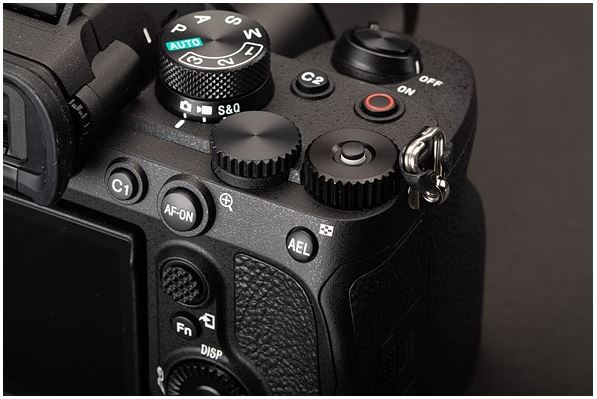
The shoulder dial (with the toggle-lock shown in its unlocked state) controls exposure comp by default, but is now unmarked and can be set to control other functions.
The a7 IV appears to share its bodywork with the a7S III, which offers a number of improvements over the previous a7 model. The grip is a bit deeper, the joystick on the back is improved, and there’s a full-size HDMI Type-A jack on the side of the camera.
A further improvement over the a7S III is the switch to an unmarked lockable dial on the camera shoulder, which means it can be reused if you’re not shooting in a way that requires exposure compensation.
There is also a fully articulated rear window. These aren’t to everyone’s taste, but they allow for video, vlogging, and selfie-taking in a way that a tilting screen doesn’t.

Both of the a7 IV’s slots accept SD cards (up to UHS-II type), with the top slot also having an inner recess that accepts CFexpress Type A cards. There’s only one slow-mo video mode that requires the use of CFexpress cards: everything else can be written to V90 SD cards.
The a7 IV still offers two card slots – both accept UHS-II SD cards and the top one can also take one of Sony’s small CFexpress Type A cards, which can maintain much faster write speeds than faster SD cards ( typically 400MB / s minimum sustained write, vs. 90MB / s minimum sustained write for SD V90 cards).
Improved UI
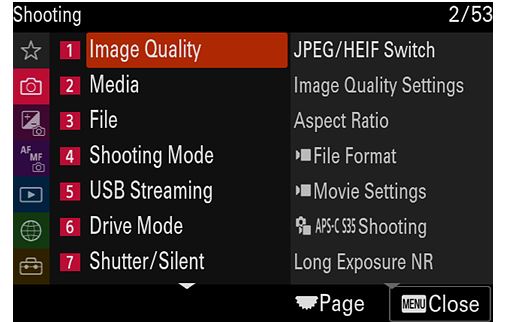
More than the ergonomic changes, we are delighted to see that the a7 IV gets the improved menus and expanded touchscreen utilization that was first seen on the a7S III. Menus now have their section tabs on the left side of the screen, which means you’re only a click or so away from being able to jump between tabs. They’re also touch-sensitive, so you may not need to click or push anything at all.
This design makes the menus much faster to navigate, as do the subsection headings within each tab. The layout differs from previous Sony cameras, but the underlying relationships between the settings remain the same, so it shouldn’t take long to get familiar with the new system if you’re already a Sony user.
Constant smartphone connection
Sony has offered Bluetooth in its cameras for many years but has only used it to transfer location data from smartphones. The a7 IV adds a constant connection option of the kind that most of its rivals offer. This means that you only have to pair the camera with your smartphone once, after which they will automatically reestablish a Bluetooth low energy connection, making it much faster and easier to transfer images to your phone.
Closable shutter
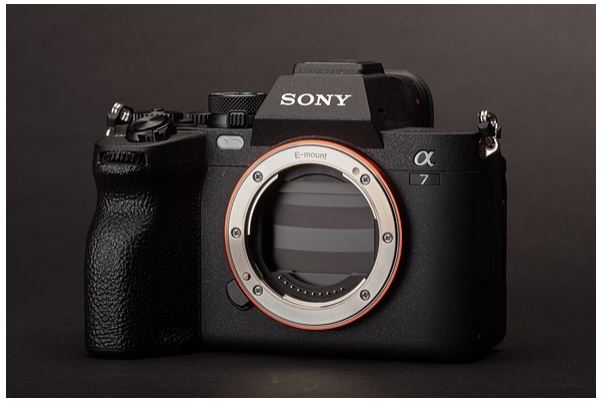
The a7 IV gets the ability to close its mechanical shutter when the camera is off, which helps prevent dust buildup on the sensor. Shutter blades tend to be very light, which also means they can be quite brittle, so this should be viewed as dust prevention, rather than physical protection.
Battery

The a7 IV uses the same NP-FZ100 battery as the a7 III and other newer Sony cameras. It’s a usefully robust unit that, combined with the relatively modest viewfinder resolution, allows the a7 IV to achieve a CIPA battery life rating of 580 shots per charge using the rear display and 520 shots per charge using the EVF.
As always, these figures are more useful for comparing cameras, rather than having an idea of exactly how many shots you will get (in our experience, getting twice the nominal number is not unusual with a new battery). We tend to find a rating of over 500 shots per charge, which means we don’t really have to worry about battery life in anything other than the most intensive professional sports or wedding sessions.
As you would expect from a new camera, the a7 IV can be charged or powered via its USB-C socket.
Initial impressions
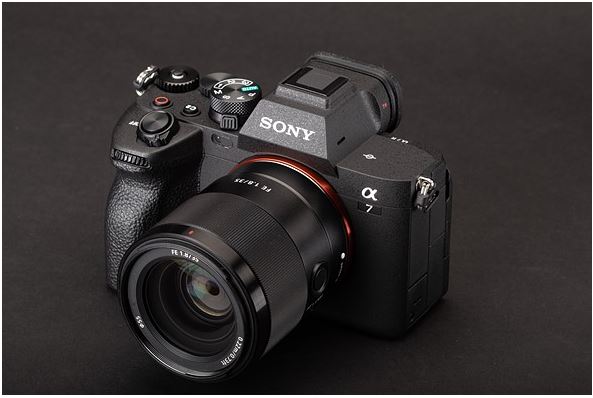
A lot has changed in the eight years since the original a7 was released – Sony is now not alone in offering a modern full-frame mirrorless camera. The technology has also made great strides forward, with autofocus, in particular, improving in terms of speed, sophistication, and simplicity, to the point where now no one would suggest that DSLRs keep the upper hand.
Sony’s move to larger batteries has had a major impact on the usability of its cameras, and its ergonomics and user interface have been radically improved with each iteration. Video features have also expanded significantly, with the fourth a7 model bringing the series back in line with its competitors.

Meanwhile, what has clearly changed is positioning. The original a7 launched at what was then a record low price for a full-frame camera: $ 1700, just the body. Even taking inflation into account, that would still be a hair less than $ 2000 in today’s money. The price of the a7 IV is a significant increase over this, and it is notable that Sony is now offering the a7C for buyers more concerned with price or size. This provision of a relatively updated sister model, rather than simply lowering the prices of outdated models, is a welcome change. The a7C may not have the improved menus of the a7 IV, but it doesn’t feel as unrefined and clunky as Brands I and II do, compared to the latest cameras.
This move allows the a7 IV to address the needs of the most dedicated enthusiast and makes it a direct competitor to Canon’s very nice EOS R6. On paper, at least, it doesn’t go much beyond Canon, though, so it will be interesting to see how they stack up in real-world use. Of course, if Sony decides to go ahead with the a7 III at a lower price, the waters will get muddy significantly. The a7 III’s autofocus is recognizable to more than a generation behind the new camera, but it’s not made to look like a work in progress the way older models were when the Mark III arrived. The a7 III still does very well at most of the things the a7 IV does, which could undermine the attempt to push the series forward.
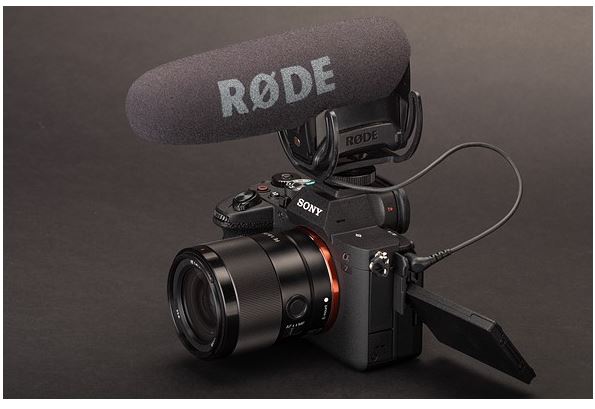
Sony seems very keen to say that the a7 IV has gotten many of its improvements from the a1 flagship, which we think runs the risk of involving a closer connection than actually exists. While it is not untrue that the a7 IV has some features that came with the a1, the new camera does not have the stacked CMOS sensor that provides the raw power that underpins the performance of the a1. In many cases, it is fairer to point out that the features of the a7 IV are shared with the video-centric a7S III. Still, it’s not a bad thing to be able to complain, but perhaps it sets more realistic expectations, in terms of how much star quality you expect to rub off on the more mass-market model.
Overall, the a7 IV seems to be a very capable camera: one with greatly improved video and more sophisticated autofocus. For newcomers, the increase in price, a variety of credible rivals, and the high bar set by the a7 III mean you’ll have a lot of work to do if you want to stand out in the way that previous a7 models did. However, owners of the first two a7 models, and even some users of the a7R series, are likely to be surprised by how far the series has come in recent years.



